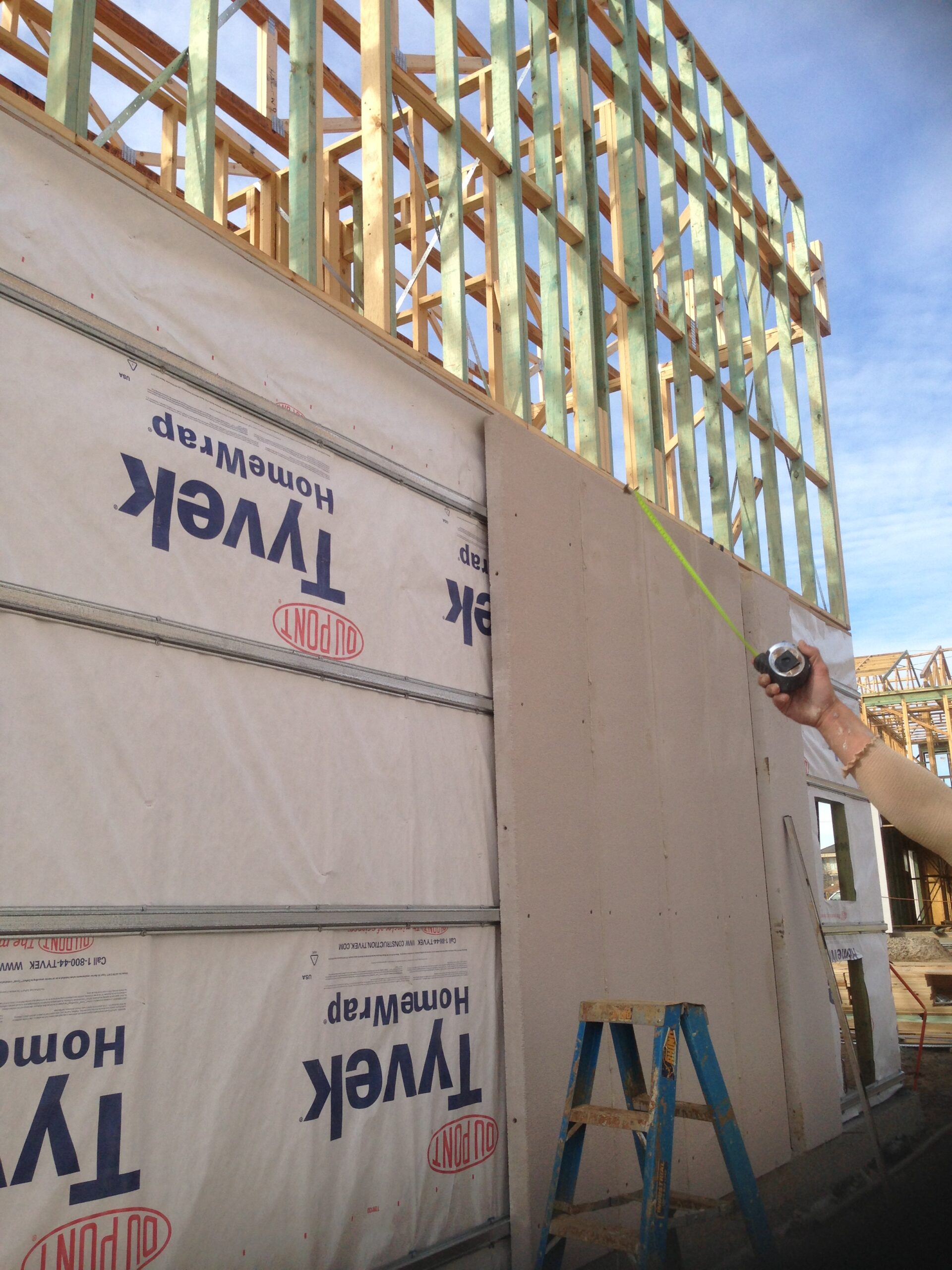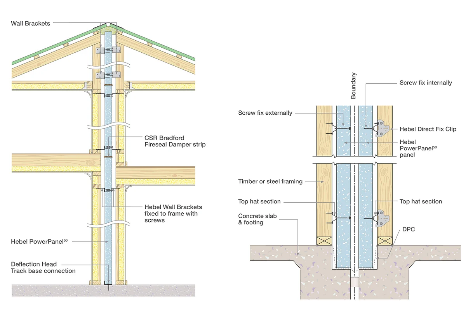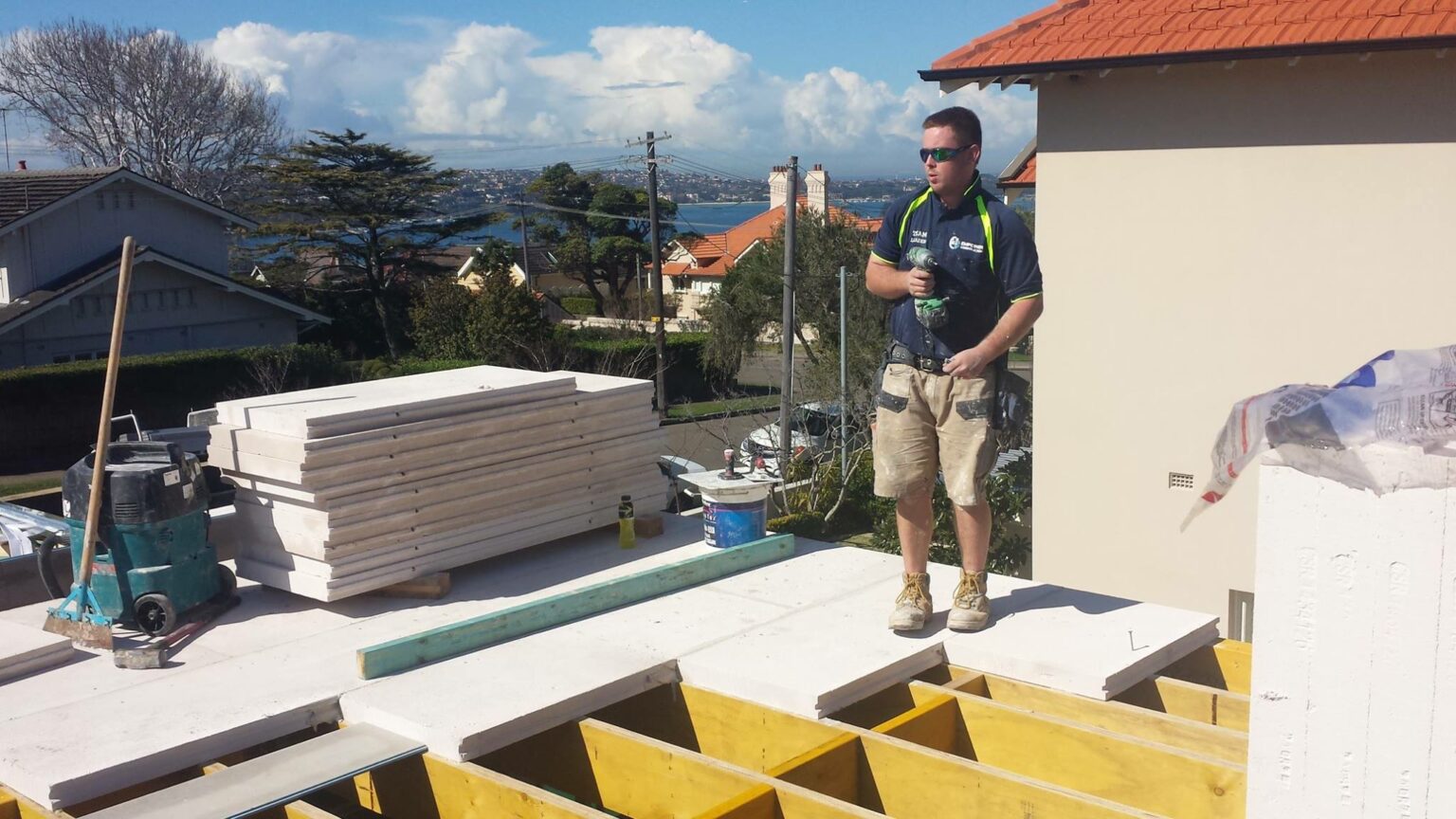In the dynamic world of construction, Autoclaved Aerated Concrete (AAC) has carved a niche for itself, setting new benchmarks in strength, adaptability, and eco-friendliness. As the global shift towards sustainable and energy-efficient building materials intensifies, AAC emerges as the go-to choice for discerning professionals in Australia and beyond. At Empower Construction, our commitment to pioneering innovation is unwavering. We specialise in offering top-tier external wall cladding solutions, ensuring that every project we undertake reflects our ethos of quality and sustainability. With a legacy spanning over 20 years, our reputation as premier Hebel installers in Sydney and across NSW is a testament to our dedication to excellence. This guide delves deep into the world of AAC, shedding light on its myriad benefits and its rising prominence in the construction landscape.
What is Autoclaved Aerated Concrete?
Autoclaved Aerated Concrete, commonly referred to as AAC, is a precast construction material that has been used for over a century in various parts of the world. It is a unique form of concrete that contains 80% air, making it exceptionally lightweight while retaining the robustness and durability expected of concrete. AAC is manufactured using fine aggregates, cement, and an expansion agent, which causes the fresh mixture to rise, akin to the process of bread dough rising. Once the material is set, it is moulded and cut into precisely dimensioned units, ensuring consistency and uniformity in its structure.
The primary applications of AAC include its use in walls, floors, and roofs. Its lightweight nature, combined with its excellent sound and thermal insulation properties, makes it a preferred choice for many construction projects. Moreover, like all cement-based materials, AAC boasts strong fire resistance, adding an extra layer of safety to structures.
Why is aerated concrete autoclaved?
The autoclaving process is integral to the production of AAC. After the initial setting of the AAC mixture, the material undergoes a process of autoclaving, which involves subjecting it to high-pressure steam curing in an autoclave. This process helps the material cure faster, ensuring that the blocks and panels maintain their dimensions. The heat and pressure from the autoclave provide the AAC with its strength, stability, and durability. Furthermore, autoclaving enhances the material’s resistance to environmental factors, ensuring longevity and reducing maintenance needs.
Its unique manufacturing process, combined with its versatile applications, makes AAC a valuable asset in sustainable and efficient construction.
How is Autoclaved Aerated Concrete Made?
The manufacturing process of Autoclaved Aerated Concrete (AAC) is the culmination of several stages that result in a unique and high-quality building material. This process, while intricate, ensures that AAC retains its distinctive properties of lightness, strength, and insulation.
Ingredients and Mixture
The initial phase involves blending several ingredients into a slurry. The primary components include:
- Cement: Provides the necessary strength and durability to the mixture.
- Lime: Acts as a stabiliser and ensures the longevity of AAC.
- Water: Facilitates the mixing process and contributes to the chemical reactions.
- Finely Ground Sand: Enhances the texture and consistency of the mixture.
Expansion Agent (typically Aluminium Powder): This is the key ingredient that causes the mixture to rise, similar to how yeast works in bread dough.
Once these ingredients are combined, the mixture is cast into a large billet. As the slurry reacts with the expansion agent, air bubbles are generated, causing the mixture to expand.
Cutting and Shaping
After the initial setting, the expanded “cake” is then wire-cut into precisely sized blocks or panels. This ensures uniformity in size and shape, which is crucial for construction purposes. The precision in this step ensures that AAC units fit seamlessly during construction, reducing the need for adjustments on-site.
Autoclaving
The cut blocks or panels are then subjected to the autoclaving process. They are placed in a high-pressure steam chamber, known as an autoclave, where they undergo steam curing. This process imparts strength and stability to the AAC units. The heat from the autoclave accelerates the curing process, ensuring that the blocks and panels maintain their dimensions and structural integrity.
Final Product
Once out of the autoclave, the AAC units are ready for use. They can be transported to construction sites, where they are used for walls, floors, roofs, and other structural components. Their lightweight nature makes transportation more efficient, and their precise dimensions ensure a smooth construction process.
When working in construction or building with AAC, understanding the meticulous process of AAC production is essential. It not only provides insights into its quality and reliability but also underscores the technological advancements in the construction industry. With AAC, builders and architects have a material that is both innovative and time-tested, offering unparalleled benefits in modern construction.
Physical Properties of AAC
Autoclaved Aerated Concrete (AAC) is not just another building material; its unique properties set it apart from traditional concrete and other masonry materials. Understanding the physical properties of AAC is crucial for professionals in the construction industry, as it informs decisions related to design, application, and performance expectations.
- Density: The density of AAC varies from 451 to 1000 kg/m³. This lightweight nature is one of its defining characteristics, making it easier to handle and transport compared to traditional concrete. Its light density is attributed to the high air content, which constitutes about 80% of its volume.
- Compressive Strength: Autoclaved Aerated Concrete (AAC) has a compressive strength ranging from 1.5 to 7.0 MPa. While it may not match the strength of traditional concrete, it offers adequate strength for most construction applications, especially when considering its weight-to-strength ratio.
- Thermal Resistance: An autoclaved aerated concrete (AAC) wall with a thickness of 200 millimetres has a thermal resistance of 1.43 when its moisture content is 5% of its weight. By adding a texture coating of 2 to 3 millimetres and an internal lining of plasterboard of 10 millimetres, the thermal resistance increases to 1.75. This high thermal resistance makes it an excellent choice for energy-efficient constructions, providing effective insulation against heat and cold.
- Sound Transmission Class (STC): AAC provides superior sound insulation. AAC blocks have a sound transmission class (STC) rating of up to 45 dB. This makes it ideal for construction projects where soundproofing is a priority.
What material is used in AAC Panels?
AAC panels are primarily made from the same materials as AAC blocks. The main ingredients include cement, lime, water, finely ground sand, and an expansion agent, typically aluminium powder. These components are mixed to form a slurry, which is then cast and expanded to create the panels. The panels are then autoclaved to impart strength and durability. The result is a lightweight, robust, and insulating material suitable for a range of construction applications.
How thick are AAC wall panels?
AAC wall panels come in various thicknesses to cater to different construction needs. Typically, the panels extend from the floor to the top of the wall and have the following dimensions:
- Height: Up to 6 m
- Width: 60 cm
- Thickness: Ranges from 15 cm to 30 cm. Interior panels with a thickness of 10 cm are also available.
The choice of panel thickness depends on the specific requirements of the construction project, such as load-bearing capacity, insulation needs, and design preferences.
What is an AAC Panel and an AAC Block?
In the world of Autoclaved Aerated Concrete (AAC), two primary forms dominate the market: AAC panels and AAC blocks. Both are integral components in modern construction, offering unique advantages that cater to various architectural and structural needs. However, while they share some similarities, there are distinct differences between the two that professionals should be aware of.
AAC Panels: AAC panels are flat structures that are predominantly used for constructing walls, floors, and roofs. Their large size allows for rapid construction, covering more area in less time compared to traditional methods. Here are some specifics about AAC panels:
- Size: Typically, AAC panels can reach up to 6 m in height and have a standard width of 60 cm. Their thickness can vary, ranging from 10 cm for interior panels to 15 cm to 30 cm for external and structural panels.
- Application: Due to their size and shape, AAC panels are ideal for large-scale constructions, such as commercial buildings, multi-story residential complexes, and industrial structures. Their excellent thermal and sound insulation properties make them a preferred choice for external walls and floors.
AAC Blocks: AAC blocks are the more traditional form of AAC and resemble the shape and size of standard bricks or larger concrete blocks. They are versatile and can be used in a variety of construction applications. Here are some specifics about AAC blocks:
- Size: The standard size of an AAC block is approximately 600 mm x 200 mm x 200 mm, but they can come in various dimensions to suit different construction needs.
- Application: AAC blocks are versatile and can be used for both internal and external walls. They are particularly favoured for residential constructions due to their ease of handling and adaptability.
Are AAC blocks the same as AAC panels?
While both AAC panels and blocks are made from the same basic materials and undergo a similar manufacturing process, their primary distinction lies in their size, shape, and application. Panels are larger and cover more area, making them suitable for big constructions, while blocks are more adaptable and can fit into various construction scenarios. The choice between the two often boils down to the specific requirements of a project, the desired construction speed, and the architectural design.
When working in construction or building with AAC, understanding the nuances between AAC panels and blocks is essential. It allows for informed decision-making, ensuring that the right AAC form is chosen for the optimal outcome in construction projects.
Benefits of Using Autoclaved Aerated Concrete
The construction industry is in a constant state of evolution, with materials and methods being refined to meet the demands of modern architecture and sustainability. Autoclaved Aerated Concrete (AAC) stands out as a material that offers a myriad of benefits, making it a preferred choice for many professionals. Let’s delve into the specific advantages that AAC brings to the table.
Thermal Insulation
One of the standout properties of AAC is its exceptional thermal insulation. With an R-value ranging from 0.8 to 1.25 per 25 mm of thickness, AAC provides a natural barrier against temperature fluctuations. This means that buildings constructed with AAC can maintain a more consistent internal temperature, reducing the reliance on heating and cooling systems. For professionals, this translates to energy-efficient constructions that can lead to significant cost savings over the building’s lifespan.
Soundproofing
In the bustling urban landscapes of today, noise pollution is a genuine concern. AAC blocks offer superior sound insulation, with an STC rating of 45 dB. This makes it an ideal choice for constructions where soundproofing is paramount, such as residential complexes near highways, schools in busy areas, or commercial buildings in densely populated zones.
Fire Resistance
Safety is paramount in construction, and AAC doesn’t disappoint in this regard. Its inherent fire resistance can withstand fire for up to 4 hours, depending on the thickness of the AAC used. This property not only ensures the safety of the building’s occupants but can also lead to potential savings on insurance premiums.
Lightweight Nature
AAC’s density, which ranges from 451 to 1000 kg/ m3. makes it a lightweight construction material. This not only eases the transportation and handling of AAC but also reduces the load on the building’s foundation. For professionals, this means quicker construction times and potential savings on foundational work.
Durability and Longevity
Despite its lightweight nature, AAC is robust and durable. It is resistant to common issues like termites, mould, and rot. Its dimensional stability ensures that it doesn’t warp or shrink over time, reducing maintenance costs and ensuring the longevity of the structure.
Eco-Friendly
In an era where sustainable construction is not just preferred but often mandated, AAC shines as an eco-friendly option. Its production process has a lower carbon footprint compared to traditional concrete. Moreover, the energy savings it offers due to its insulation properties further cement its position as a green building material.
In the professional world of construction, the choice of materials can make or break a project. AAC, with its plethora of benefits, offers architects, builders, and developers an option that is efficient, sustainable, and future-ready.
How Much Does Autoclaved Aerated Concrete Cost?
In the construction industry, cost-effectiveness is a pivotal factor in decision-making. When considering AAC for a project, professionals often weigh its benefits against its cost. In Australia, the price of AAC can vary based on factors such as the manufacturer, region, and specific product type. On average, AAC blocks can cost a couple of dollars per block or more, while AAC panels might cost up to $100 per square metre. It’s essential to note that these are average figures for the purchase of the materials, and prices can fluctuate based on market dynamics and project-specific requirements.
Who Makes Autoclaved Aerated Concrete in Australia?
CSR Hebel is the leading producer of high-performance AAC in Australia, with more than three decades of experience in the building products industry. Its AAC products are suitable for residential, commercial, and civil applications.
As a verified CSR Hebel partner, Empower Construction offers Hebel installation services in Sydney and surrounding areas. We are dedicated to delivering quality, sustainability, and innovation in every project we undertake. With over 20 years of expertise in the field, we ensure that our work meets the highest standards of precision and excellence.
Is AAC Better Than Bricks?
The debate between AAC and bricks is a longstanding one. Both materials have their merits, but when it comes to modern construction requirements, AAC often edges out traditional bricks in several aspects.
- Thermal Insulation: AAC’s superior thermal insulation properties mean that buildings constructed with it require less energy for heating and cooling, leading to long-term cost savings.
- Weight: AAC is significantly lighter than bricks, making it easier to transport and handle, leading to quicker construction times.
- Eco-Friendly: The production of AAC has a lower carbon footprint compared to bricks, making it a more sustainable choice.
- Sound Insulation: As previously mentioned, AAC offers excellent soundproofing, making it ideal for urban constructions.
For a more in-depth comparison, consider reading Hebel vs Brick: Which is Better?, which provides a comprehensive breakdown of the two materials.
What is the Difference Between ALC and AAC Panels?
In the realm of modern construction materials, Autoclaved Aerated Concrete (AAC) and Autoclaved Lightweight Concrete (ALC) often come up as prominent choices. While they share similarities, given that they both belong to the family of lightweight aerated concretes, there are distinct differences that professionals should be aware of.
- Composition: Both AAC and ALC are made from a mixture of cement, lime, sand, and water. However, the primary difference lies in the aeration agent used. While AAC uses aluminium powder, ALC might use different agents, leading to variations in the final product’s microstructure.
- Density: AAC typically has a density ranging from 400 to 700 kg/m³, making it exceptionally lightweight. ALC, on the other hand, can have a slightly higher density, though it still falls under the lightweight category.
- Thermal Conductivity: Both materials offer excellent thermal insulation, but AAC often has a slight edge due to its unique microstructure, which provides better resistance to heat transfer.
- Applications: While both AAC and ALC are used for walls, floors, and roofs, their specific applications might vary. For instance, AAC is often preferred for load-bearing structures due to its strength and durability, while ALC might be chosen for non-load-bearing partitions.
- Market Availability: In some regions, AAC might be more readily available than ALC, given its widespread adoption and recognition in the construction industry.
For professionals, the choice between AAC and ALC will often come down to project-specific requirements, availability, and cost considerations.
Conclusion: Pioneering the Future of Construction
Autoclaved Aerated Concrete stands as a testament to the evolution of construction materials. Its myriad of benefits, from thermal insulation to soundproofing, makes it a preferred choice for professionals looking to deliver projects that are efficient, sustainable, and future-ready. As the construction industry continues to evolve, materials like AAC will undoubtedly play a pivotal role in shaping the landscapes of tomorrow. Whether you’re an architect, builder, or developer, understanding the nuances of AAC ensures that you’re equipped to make informed decisions that align with the demands of modern construction.
Ready to embark on your next construction project with the best AAC solutions?
Empower Construction is here to guide you every step of the way. With over 20 years of expertise, we ensure that your projects stand the test of time. Contact us today to discover how we can elevate your construction endeavours.





